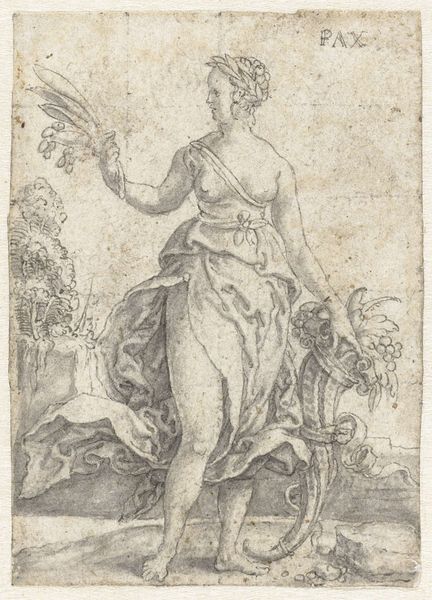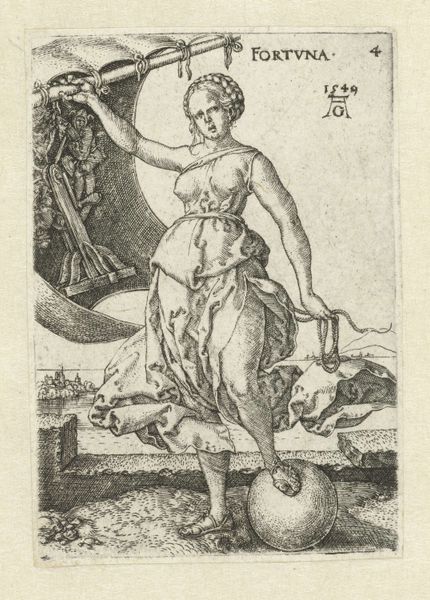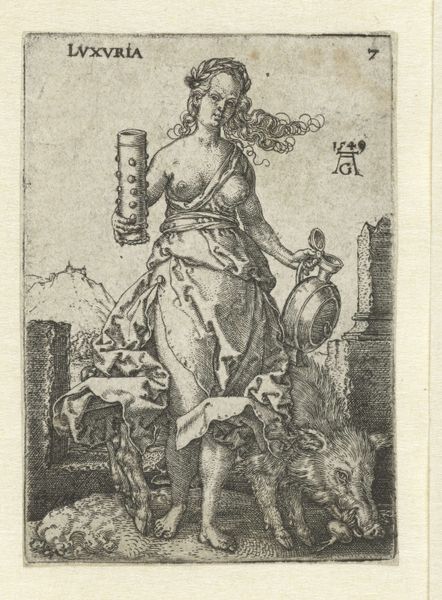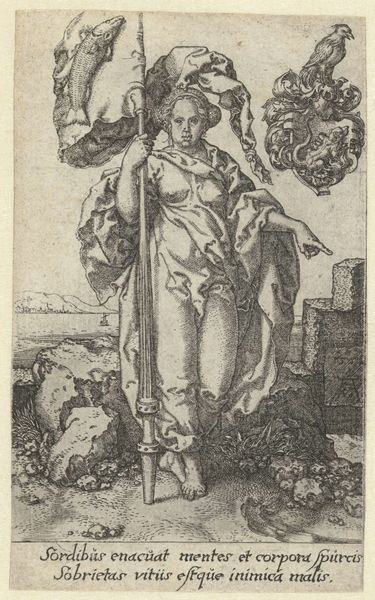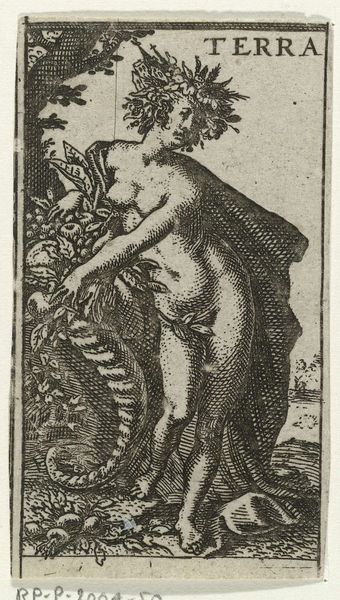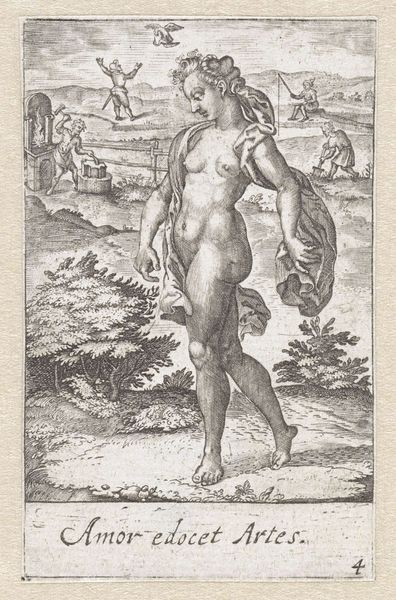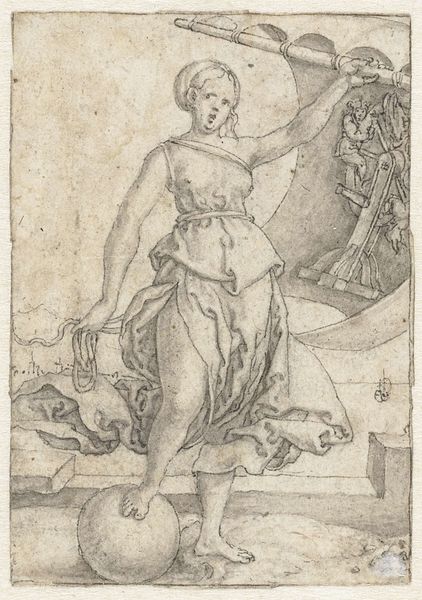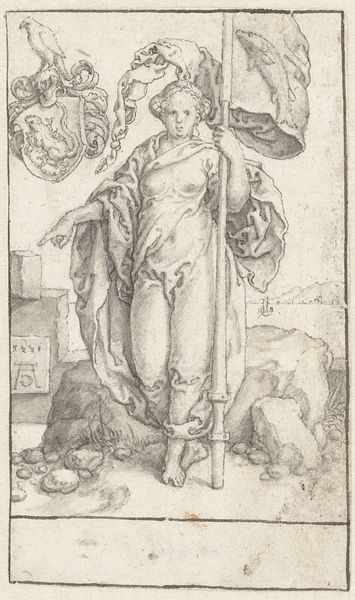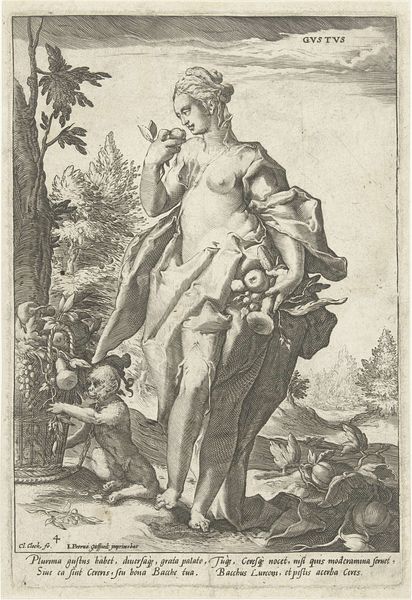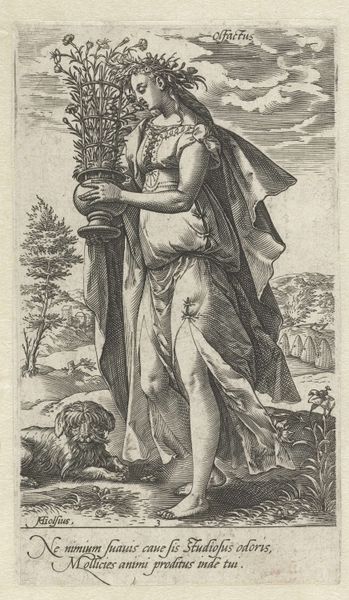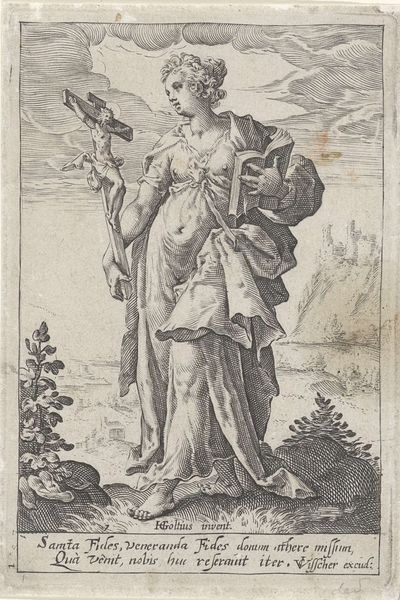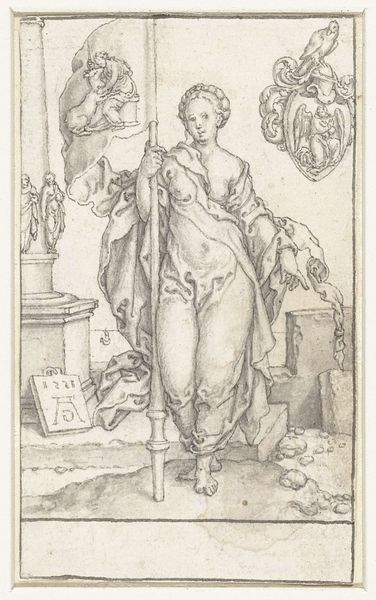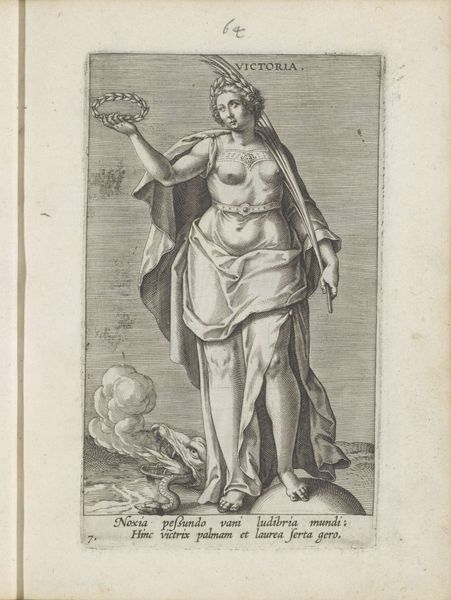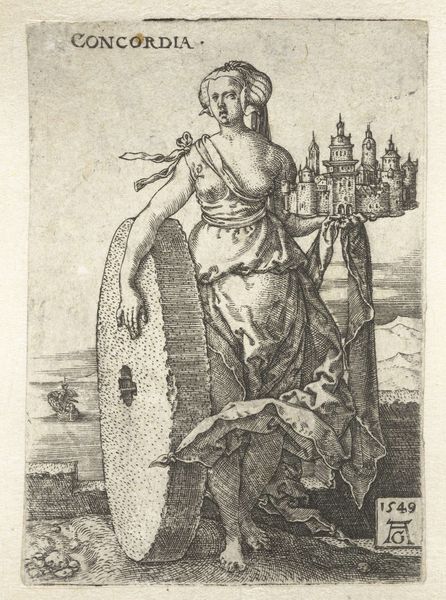
print, engraving
#
allegory
# print
#
figuration
#
11_renaissance
#
line
#
history-painting
#
northern-renaissance
#
engraving
Dimensions: height 70 mm, width 49 mm
Copyright: Rijks Museum: Open Domain
Editor: Here we have Heinrich Aldegrever's engraving, "Vrede," created in 1549. It shows a figure, likely a personification of peace, holding what looks like an olive branch. I'm struck by the precision of the lines and how the textures are rendered in this print. What stands out to you in terms of its creation? Curator: Looking at this engraving, I'm particularly interested in the materials and processes involved. Consider the labour: the skill required to transfer Aldegrever's artistic vision onto a metal plate using only lines and then multiply it through printing. It makes us reconsider what art could be during this era and who had access to its images, challenging notions of singular masterpiece and inviting multiple viewing experiences for different strata of society. Editor: That’s fascinating. So, instead of just admiring the image, you’re asking us to think about how this print circulated and its availability for the contemporary viewer? Curator: Exactly. Who owned it? How was it displayed? How did its relative affordability influence its reception compared to, say, a unique oil painting only accessible to an elite patron? The materiality of the print—the paper, the ink—speaks to its social function. The very act of engraving, of reproducible art, hints at a breakdown of established hierarchical artistic practices by allowing its access to different patrons and the population. Editor: So the choice of printmaking itself is significant, connecting to broader societal changes? Curator: Precisely. Consider how this multiplied image may challenge notions of artistic exclusivity and value by bringing images and ideas of ‘peace’ to broader audiences. A perfect blend of material exploration with meaningful visual commentary and a direct criticism of other traditional art production forms. Editor: I see what you mean. It changes the way I look at the artwork; it's not just an image, but evidence of its time. Thank you! Curator: Indeed. Thinking about art in terms of material processes enriches our understanding of its purpose and the forces surrounding it.
Comments
No comments
Be the first to comment and join the conversation on the ultimate creative platform.
